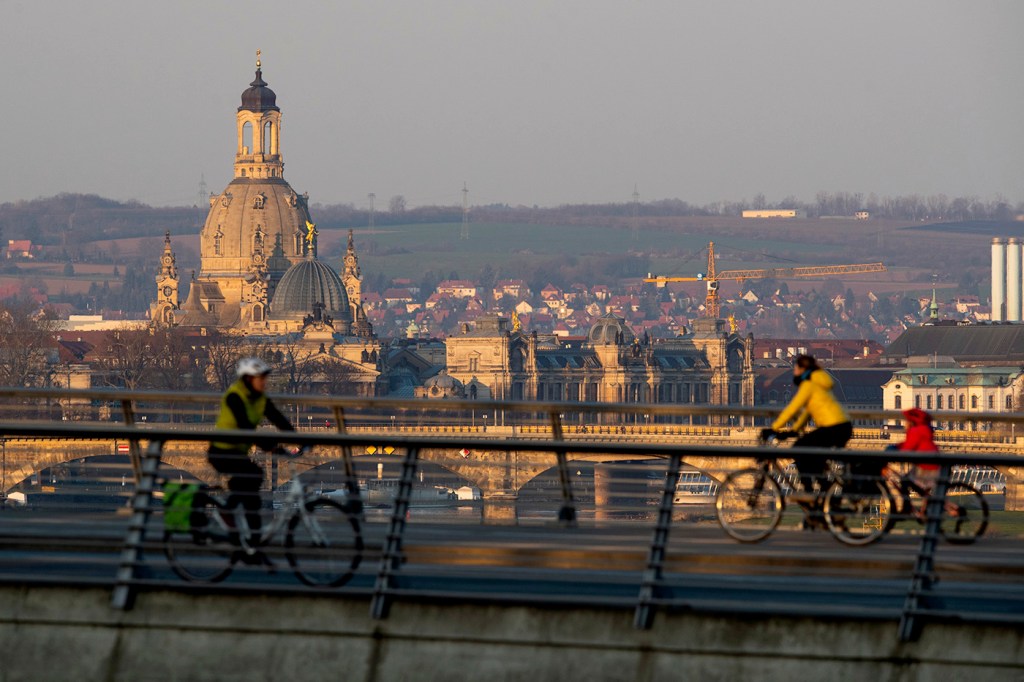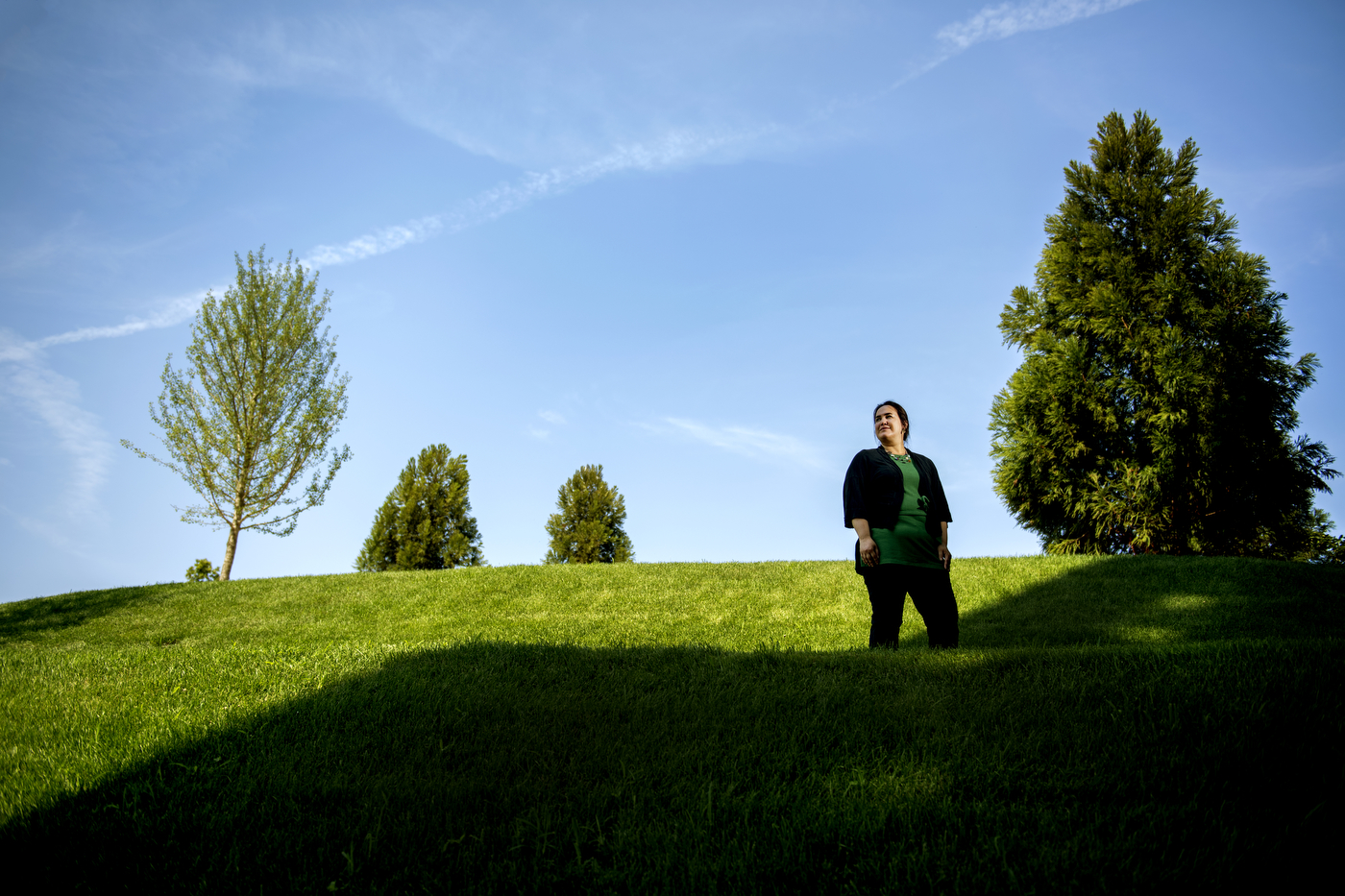‘Corona bike lanes’ and grassroots playgrounds: Is this how the COVID-19 pandemic will change cities?

BERLIN – Running through the middle of this city’s vibrant Kreuzberg neighborhood, busy Kottbusser Damm has always been a nightmare for cyclists. For years, double-parked cars forced those brave enough to tackle the street to dodge in and out of rushing car traffic.
The scene along the half-mile thoroughfare is very different now. As the neighborhood’s businesses and restaurants begin to re-open after nearly two months of lockdown, cyclists pedal along a brand-new bike lane, carved out of what had been parking spaces and set apart from traffic by gleaming yellow lines and red-and-white striped bollards. Parked cars, meanwhile, were shifted to the middle of the street, and a single lane in each direction was open to car traffic.
Kottbusser Damm is just one of more than a dozen streets in Berlin where authorities have installed “pop-up bike lanes” – or “corona bike lanes,” as locals are already calling them — in the last two weeks. The idea is to give pedestrians and cyclists a way to commute and exercise safely from both cars and possible infection by SARS-CoV-2, the coronavirus that causes COVID-19.
Berlin’s far from alone. Other German cities, including Stuttgart and Essen, are setting aside space for cyclists too. In Milan, city officials announced that 22 miles of streets in the city center will be re-engineered to make them safer for cyclists and pedestrians as restrictions on movement start to lift. And in Brussels, authorities are moving quickly to transform 25 miles of car lanes into bike lanes.
“Any crisis is a catalyst for change,” says Sara Jensen Carr, an assistant professor of architecture at Northeastern who studies how urban societies respond to epidemics. “What we’re going through right now is really interesting.”

Carr, the author of The Topography of Wellness: Health and the American Urban Landscape, a forthcoming book that chronicles the ways past epidemics changed the way cities are designed, says history is repeating itself. Outbreaks of yellow fever, tuberculosis and cholera at the turn of the 19th century hit crowded cities particularly hard.
“Those were diseases that were quite violent, and their causes were unknown at the time,” she says. “The unknowability and fear garnered support for large changes.”
Some of those changes are still with us today.
Planners created inner-city parks, including the so-called “Emerald Necklace” in Boston and Central Park in New York, in response to epidemics. The idea was to give city dwellers an accessible escape from the “bad air” doctors at the time thought was behind diseases. And city streets were straightened to accommodate underground sewage systems that removed waste more efficiently.
Pop-up bike lanes and grassroots efforts to turn mostly empty parking lots and residential streets into playgrounds in the midst of the coronavirus pandemic are rooted in a similar spirit.
“What resonates about coronavirus is its spread is still unknown, and that’s spurring people to look for solutions,” Carr says. “Public parks being advocated for again echoes that.”
Though many of the measures implemented recently are being billed as temporary, if history is any guide they stand a good chance of remaining part of the urban landscape – and benefitting city-dwellers for decades to come.
“Temporary bike lanes will help us give cyclists more space in the corona crisis,” Regine Gunther, Berlin’s senator for environment, transportation and climate protection, said in an April announcement. “The idea is to put markings for temporary bike lanes in places where planning is already underway for permanent ones.”
“There’s a focus on new ways of mobility, particularly modes of active mobility, which in the end are good for climate change,” Carr says. “And that’s still going to be important after the pandemic passes.”
There’s cause for concern as well: History suggests that such sweeping, sudden change sometimes leaves out the most vulnerable, isolating poor neighborhoods and worsening inequality. A historically African-American neighborhood called Seneca Village was leveled to create Central Park, for example.
Before the coronavirus crisis, the neighborhood around Kottbusser Damm was rapidly gentrifying. If other cities are going to follow Berlin’s lead, they should look ahead to make sure corona bike lanes work for people after the crisis, too.
“Health and gentrification often go hand in hand,” Carr says. “When we’re planning bike lanes, we should think about whether they get everyone where they need to go.”
Another open question is how cities will cope with sharp declines in public transit use caused by the fear of infection and need to maintain physical distance. Berlin’s distinctive bright-yellow city buses and subway trains still run regularly, for example, but ridership is down by more than half. Many now rumble past carrying just a masked passenger or two. Plastic sheeting separates drivers from the rest of the bus.
Carr says that if confidence in public transit problems aren’t addressed quickly, it could mean a return to personal car use in big cities or a new exodus to the suburbs – both developments that bode ill for post-pandemic urban life.
In her book, she examines the health effects of suburbanization, which blighted inner cities in the 1970s and contributed to epidemics of chronic diseases such as obesity and diabetes.
The coronavirus crisis has the potential to undo a recent trend towards urban renewal, which saw young people moving back to cities and paying a premium for density, walkability and other urban amenities.
“The more we build cities around the car, the more it leads to a number of health issues,” Carr says. “What I most worry about is people going back to cars and leaving the city.”
For media inquiries, please contact media@northeastern.edu.





